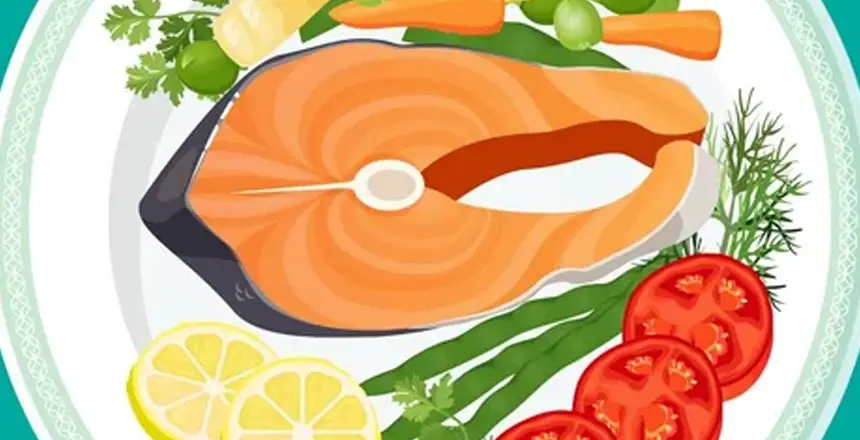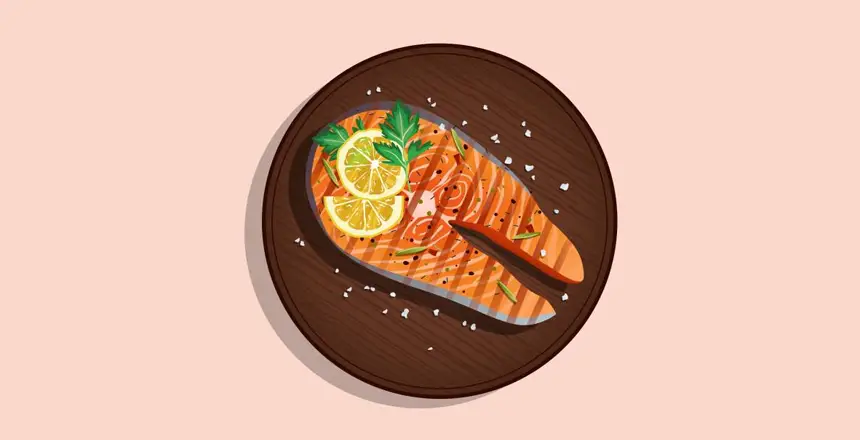Baking salmon is one of the quickest and easiest ways to enjoy a delicious meal. But it can be tricky to get just right, as fish has an unfortunate tendency toward dryness if cooked too long. That’s why understanding how long to bake salmon at 400 degrees Fahrenheit is essential knowledge for those looking to whip up a perfect weeknight dinner in a jiffy.
Here, we’ll cover everything you need to know about baking salmon just right – from exact cook times and what type of pan best suits your cooking style, all the way through adding dynamic flavor profiles with simple ingredients and recipes you can use again and again.
Read also:
- How Long To Bake Salmon At 425
- How Long To Bake Salmon At 350
- Is Smoked Salmon Cooked Or Raw
- How To Cook Salmon In The Oven
The Time It Takes to Bake Salmon At 400 F
When baking salmon at 400 degrees Fahrenheit, it’s important to consider the thickness of the fish:
- For every half inch of thickness, the salmon will take about 4-6 minutes to cook.
- For a piece of salmon that is one inch thick, it will take approximately 8-12 minutes in the oven.
- A piece of salmon that is 1.5 inches thick will take roughly 12-16 minutes
- A 2 inch thick piece may need around 16-20 minutes in the oven.
When it comes to determining doneness, insert an instant read thermometer into the thickest part of the fish. It’s important to check the salmon regularly and make sure it reaches an internal temperature of 145 degrees Fahrenheit.
How Much Time to Cook Salmon at 400 Without Foil?

When baking salmon without foil, the most important thing is to make sure that the skin side of the fish is facing down on the pan. This prevents it from sticking and ensures a crispier texture on one side of the salmon.
The cooking time is generally similar when using this method as with other methods (around 8-12 minutes for a 1-inch thick piece of salmon). However, it’s important to keep an eye on the fish as it cooks and make sure that the skin doesn’t burn.
How to Know If Your Salmon Is Done?
Salmon is a delicious and healthy protein source, but it’s important to cook it properly to avoid any risk of foodborne illness. Here are some key tips to know if your salmon baked to perfection:
- Check the internal temperature: Cook salmon until it reaches an internal temperature of 145°F (63°C). Use a meat thermometer to accurately check the temperature.
- Look for color: Cooked salmon should be opaque and have a pink or orange color.
- Check the texture: Undercooked salmon will be mushy, while fully cooked salmon will be flaky but still moist.
- Use a fork: If you can easily flake the salmon with a fork, it is fully cooked.
By following these steps, you can ensure that your salmon is cooked to perfection and safe to eat.
A Few Recipes for a Perfect Baked Salmon
Making a delicious and healthy salmon dish has never been easier. With so many recipes to choose from, it can be difficult to decide where to start. Here are some of our favorite recipes for baking salmon at 400°F
Spicy Baked Salmon with Crispy Parmesan Crust
The recipe for this dish is quite simple: coat the salmon in a mixture of spicy ingredients, such as chili powder, paprika, and cayenne pepper, before baking it. Then, add a layer of parmesan cheese on top and broil it until golden and crispy.
The end result is a delicious and healthy meal that will leave everyone begging for seconds.
Five-Spice Baked Salmon with Sweet-and-Sour Glaze
This popular Asian-inspired recipe combines the rich taste of salmon with a tantalizing mixture of five-spice powder and ginger, creating a truly mouth-watering experience.
The salmon is then baked to perfection and finished off with a sweet-and-sour glaze that adds just the right amount of sweetness to balance out the spice, making it an ideal choice for all seafood and spice enthusiasts.
Herb Crusted Salmon with Roasted Garlic Potatoes
The salmon is coated with a mixture of herbs and breadcrumbs, giving it a crispy and flavorful crust. The roasted garlic potatoes add a hearty and satisfying side dish, perfectly complementing the richness of the salmon.
This dish is not only easy to make, but it is also impressive enough to serve to guests. Give it a try for a satisfying and nutritious meal.
Honey Mustard Glazed Salmon
This popular recipe is a simple yet delicious way to make salmon. The salmon is baked in the oven and then coated with a sweet and tangy honey mustard glaze that adds flavor without adding any extra calories or fat.
The result is a flavorful dish that pairs perfectly with a side salad or roasted vegetables for an easy and delicious meal.
Asian Style Salmon Fillets
To make this recipe, marinate your salmon fillets in a mixture of soy sauce, ginger, garlic, brown sugar, and sesame oil. Then, cook the fillets either on the grill or in the oven until they are cooked through. Serve alongside steamed vegetables or rice for a satisfying and nutritious meal.
Baked Salmon Nutrition Facts
Baked salmon is a nutritional powerhouse that is not only flavorful but is packed with essential nutrients. Here are some key nutritional facts about baked salmon: A 3-ounce serving of baked salmon provides 122 calories, 17 grams of protein, 5 grams of fat, and 40% of the suggested daily intake of vitamin D.
It is also an excellent source of omega-3 fatty acids, which can help reduce inflammation and improve heart health. Additionally, baked salmon is low in saturated fat and provides essential minerals like potassium, selenium, and B vitamins.
Adding baked salmon to your diet is an easy and delicious way to boost your health and overall well-being.
Read more about salmon nutrition facts here.
Delicious Sauces for Baked Salmon
Salmon is delicious on its own, but adding a sauce can take it to the next level. Let us recommend some perfect sauces to serve with this dis:
- Lemon Butter Sauce: The perfect combination of creamy and tangy, this is a classic choice for grilled or baked salmon. It’s super easy to make and can be made in advance if you’re looking for an impressive last-minute dish.
- Miso-Ginger Glaze: This flavorful sauce adds an umami flavor to the salmon. The sweetness of the honey balances out the saltiness of the miso, making it a delicious and unique topping for your dish.
- Teriyaki Sauce: Rich and sweet, teriyaki sauce is a great way to give your salmon an Asian-inspired flavor. Use store-bought sauce or make a homemade version for added flavor and freshness.
- Citrus-Dill Sauce – This tangy and light sauce pairs perfectly with salmon’s richness. The dill adds an earthy flavor that compliments the citrus, making this an ideal topping for any salmon dish.
Regardless of what type of sauce you choose, adding it to your baked salmon will turn any ordinary dish into something special.
FAQs
Should I Cook My Salmon At 350 Or 400?
It depends on the size of the salmon, but generally it is best to bake salmon at 350-400 degrees Fahrenheit. If you are baking a smaller piece of salmon, you can cook it at a higher temperature like 400-450 degrees. For larger pieces of salmon, lower temperatures are best.
Find out more about “How Long to Bake Salmon at 350” here.
Is It Safe to Digest Raw Salmon?
It is not recommended to consume raw salmon as it can contain harmful bacteria, parasites, and other pathogens. For safety reasons, it is best to cook salmon thoroughly before eating it.
How Can I Keep My Salmon Moist?
To keep your salmon moist, cook it at a lower temperature and avoid overcooking. Baste the salmon with a flavorful sauce or marinade to add moisture throughout the cooking process. Additionally, you can cover the pan with a lid or foil while baking to help retain moisture.
What If I Want My Salmon To Be Crispy?
To achieve a crispier finish to your salmon, preheat the oven to a higher temperature, such as 400 degrees Fahrenheit. Then brush the top of the salmon with a small amount of oil or melted butter and bake until golden brown. You can also broil the salmon for 2-3 minutes at the end of cooking time for an extra crisp finish.
How to Cook Frozen Salmon?
A: To cook frozen salmon, start by thawing it in the refrigerator for 24 hours. Then pat dry with a paper towel before seasoning and baking as you normally would. Make sure to add an extra 5-10 minutes of cooking time when using frozen salmon.
Final Thoughts
Our ultimate guide to the perfect way to bake salmon at 400°F is now complete. Now that you know all the information necessary to create a tantalizing, succulent piece of salmon, it is time to put that knowledge into action in your very own kitchen! For optimal results use a reliable oven thermometer and be sure to adjust according to your desired level of doneness.
Lastly, please make sure you purchase fresh or fresh-frozen seafood whenever possible and keep it stored correctly prior to cooking. Start searching for some wild caught salmon recipes and have fun creating tastebud delights! Bon Appetite!


